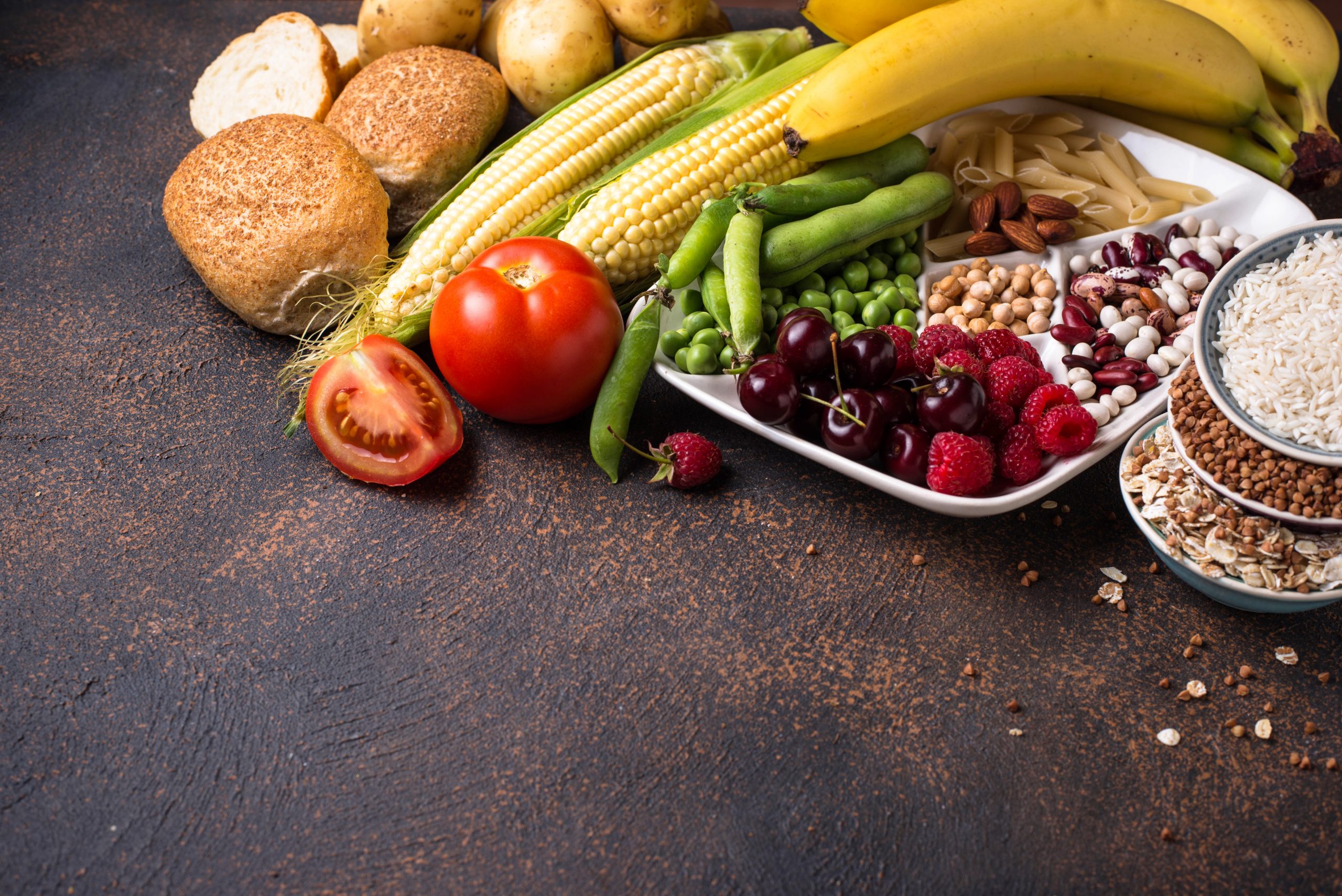What food should I eat during exercise?

Athletes should focus on the larger picture before anything else: carbohydrate intake. Carbohydrates are any foods that contain sugar or starch. Common sources include sports drinks, fruit, bread, grain-based foods such as cereal and oatmeal, rice, pasta, and most sport-specific nutrition products. Eating carbohydrates during exercise will increase endurance capacity, increase the amount of time it takes for muscles to become fatigued, and decrease the rate of perceived exertion (RPE) (Jeukendrup, 2014).
While it’s easy to identify what type of fuel is best during training and competition, keep reading to learn how to optimize that intake based on the type of exercise.
Low to Moderate-Intensity Exercise
During low to moderate-intensity exercise, it was previously believed that people could only absorb 60 grams of carbohydrate per hour, so athletes were cautioned against going above this amount as this would increase the risk of gastrointestinal distress due to poor absorption. However, more recently, researchers are beginning to understand that when athletes undergo a period of “nutritional training”—practicing their fueling strategy in a graduated way to slowly build up their ability to digest higher amounts of carbohydrates—they are able to maintain higher effort for longer periods of time (Jeukendrup, 2014).
Over time, studies have shown that athletes have been able to tolerate up to 90 grams per hour of carbohydrates when exercising at an intensity that can be sustained greater than two and a half to three hours when these athletes varied the types of carbohydrates they consumed. Ingesting a combination of glucose and fructose, two types of sugar molecules, allows people to increase the total amount of carbohydrates they can absorb.
In practice, this would look like combining starchy foods such as rice cakes, bars, and bananas with sweet foods such as gels, gummies, and sports drinks. Put simply, if you practice slowly increasing your carbohydrate intake and vary the sources of carbohydrates you eat, you can increase your capacity to use carbohydrates, up to 90 grams per hour, as you exercise to delay fatigue and decline in performance. Typically, during longer, low-intensity bouts of exercise, the stomach is not as sensitive and athletes are able to eat a wider variety of foods with less risk of bloating, gas, and discomfort. Furthermore, the higher an athlete’s carbohydrate intake is every day, the more they can absorb during exercise (Ferraris, 2001), which is why it is important that athletes maintain a diet high in carbohydrates even while not actively engaged in exercise.
High-Intensity Exercise
The burden of carbohydrate intake is much lower at shorter, higher exercise intensities. At one hour and 75-80% intensity, it has been found that consuming carbohydrates during exercise will stimulate electrical conduction in the brain that result in performance improvements (Jeukendrup, 2014).
With this in mind, researchers believe that during shorter, higher intensity bouts of exercise, the benefit of ingesting carbohydrate is not related to the metabolic process of converting sugar to energy, rather, it’s related to the brain signaling that follows carbohydrate ingestion. Small amounts of carbohydrate, about 20-30 grams total, may be enough to stimulate performance improvements. This is good news for athletes who struggle with nutrient intake during activity because you can get the optimal amount of carbohydrate with just one gel, a couple of energy chews, or a small bottle of sport-specific drink mix.
The Bottom Line
This guidance can be daunting if you don’t like eating during exercise—60-90 grams is a big number to reach—so it can be helpful to keep in mind that consuming some carbohydrates is better than none, even if you are not able to hit your fueling targets entirely. Research has found that amounts as small as 22 grams per hour have performance benefits (Jeukendrup, 2014), which is roughly the amount found in a single Fig Newton, three Oreos, 12 oz of Gatorade, or a small banana. So even if you just eat a small amount once per hour, you’ll be better off than skipping the fueling altogether.
Klein, A. V., & Kiat, Ferraris, R. P. (2001). Dietary and developmental regulation of intestinal sugar transport. The Biochemical Journal, 360(Pt 2), 265–276. https://doi.org/10.1042/0264-6021:3600265
Jeukendrup, A. (2014). A Step Towards Personalized Sports Nutrition: Carbohydrate Intake During Exercise. Sports Medicine, 44(S1), S25-33
Read more Spirit of Sport blog posts



